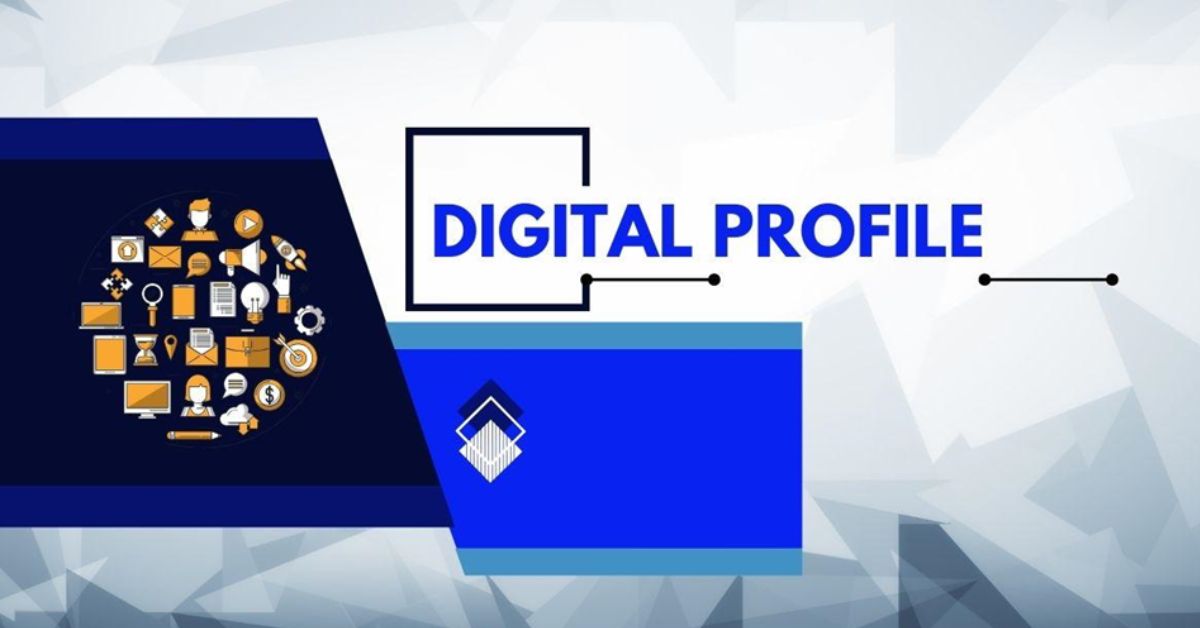BUSINESS
What is Compulsory Convertible Debentures: What You Need to Know

Are you curious about the financial world’s hidden gems? Dive into the realm of Compulsory Convertible Debentures – a unique instrument that offers a blend of debt and equity features. Unravel the mysteries, understand the dynamics, and discover why these debentures are creating buzz in investment circles. Join us on this enlightening journey to explore What is Compulsory Convertible Debentures: What You Need to Know!
Understanding Compulsorily Convertible Debentures
Compulsorily Convertible Debentures (CCDs) are a hybrid financial instrument that combines the characteristics of both debt and equity. These debentures are issued by companies to raise funds, offering investors fixed interest until conversion into equity at a predetermined date or event.
Unlike traditional debentures, CCDs have a mandatory conversion feature, meaning they must be converted into equity shares within a specified time frame. This unique aspect gives investors the potential for capital appreciation along with regular interest payments.
Investors holding CCDs essentially have a foot in both the debt and equity markets, enjoying the security of fixed returns while also benefiting from any upside potential if the company performs well post-conversion. Understanding this dual nature is crucial for making informed investment decisions in the dynamic world of finance.
Key Takeaways
Compulsorily Convertible Debentures (CCDs) are a hybrid financial instrument that combines features of both debt and equity. They are issued by companies to raise funds, with the debenture holder having the option to convert them into equity shares at a predetermined date.
One key takeaway is that CCDs offer investors the potential for higher returns compared to traditional debentures since they have an equity component. This feature makes them attractive to investors looking for growth opportunities in addition to fixed income.
Another important point to note is that CCDs carry a mandatory conversion feature, meaning that they must be converted into equity within a specific period as per the terms of issuance. This conversion aspect differentiates them from optionally convertible debentures where conversion is at the discretion of the holder.
Understanding the key takeaways of compulsorily convertible debentures can help investors make informed decisions about incorporating these instruments into their investment portfolios.
How Compulsorily Convertible Debentures Are Traded
When it comes to trading Compulsorily Convertible Debentures (CCDs), there are a few key things to keep in mind. Unlike traditional debentures, CCDs have a mandatory conversion feature, meaning they must be converted into equity shares at a predetermined date or event. This unique characteristic adds an element of flexibility and potential upside for investors.
CCDs can be traded on stock exchanges or through private placements, offering investors different avenues to buy and sell these instruments. The trading process involves understanding the terms of the debenture agreement, including the conversion ratio and timeline for conversion.
Investors looking to trade CCDs should closely monitor market conditions, company performance, and any regulatory changes that could impact the value of these securities. Due diligence is essential when considering investing in CCDs to ensure you fully understand the risks and potential rewards involved.
Real-World Examples
Real-world examples of compulsory convertible debentures can be found in various industries where companies seek to raise funds while providing investors with the potential for equity ownership.
For instance, Company X, a tech startup, may issue compulsorily convertible debentures to attract investment for its expansion plans. These debentures would convert into equity shares at a predetermined date or milestone.
In another scenario, Company Y, a pharmaceutical firm, could utilize compulsory convertible debentures to fund its research and development projects. Investors who hold these instruments would have the opportunity to participate in the company’s growth through conversion into shares.
These real-world cases demonstrate how compulsory convertible debentures serve as versatile financial instruments that cater to both companies’ capital needs and investors’ interests in gaining potential equity stakes.
Types of Debentures
When it comes to debentures, there are various types that cater to different investor needs. One common type is the secured debenture, which offers security in the form of assets for investors. On the other hand, unsecured debentures do not have specific assets as collateral but rely on the issuer’s creditworthiness.
Convertible debentures allow holders to convert their debt into equity at a predetermined price or rate, providing potential upside through ownership in the company. Non-convertible debentures, on the contrary, cannot be converted into equity and offer fixed returns until maturity.
Zero-coupon debentures do not pay regular interest but are issued at a discount to face value with investors earning returns upon redemption. Perpetual debentures have no maturity date and provide interest payments indefinitely unless redeemed by the issuer.
Benefits and Risks of Compulsory Convertible Debentures
Compulsory Convertible Debentures (CCDs) come with a set of benefits and risks that investors need to consider before investing. One of the key benefits is that CCDs offer the potential for higher returns compared to traditional debentures. This is because they can be converted into equity shares at a predetermined price, allowing investors to benefit from any appreciation in the company’s stock price.
However, this potential for higher returns also comes with increased risk. Since CCDs are convertible into equity, investors are subject to the performance of the company’s stock. If the stock underperforms or if there are market fluctuations, investors may not realize their expected returns.
Another benefit of CCDs is that they provide companies with a way to raise capital without immediately diluting existing shareholders’ ownership. This can be advantageous for companies looking to fund growth projects or expansion plans without impacting current shareholding structure.
On the flip side, issuing CCDs can lead to future dilution of ownership once they convert into equity shares. This could potentially reduce existing shareholders’ control over the company and impact earnings per share.
While compulsory convertible debentures offer attractive features such as potential high returns and capital-raising opportunities, it’s important for investors to carefully weigh these benefits against the inherent risks involved in this financial instrument.
Conclusion
After delving into the intricacies of compulsory convertible debentures, it’s clear that these financial instruments offer a unique blend of debt and equity characteristics. Investors can benefit from potential capital appreciation while enjoying fixed interest payments until conversion.
Understanding how CCCDs are traded in the market sheds light on their liquidity and flexibility for investors seeking to diversify their portfolios. Real-world examples showcase the practical application of CCCDs in various industries, highlighting their adaptability to different business needs.
Exploring the types of debentures available unveils a range of options for companies looking to raise capital through this hybrid instrument. By weighing the benefits against the risks associated with CCCDs, investors can make informed decisions based on their risk appetite and investment objectives.
As you continue your journey in the world of finance, remember that compulsory convertible debentures are just one piece of the puzzle in building a well-rounded investment strategy. Stay curious, keep learning, and explore all avenues to grow your wealth intelligently.
FAQs
What are Compulsory Convertible Debentures (CCDs)?
Compulsory Convertible Debentures (CCDs) are a type of hybrid security that is initially issued as a debt instrument but can be converted into equity shares at a later date, typically decided at the time of issuance.
How do Compulsorily Convertible Debentures differ from Optionally Convertible Debentures?
The main difference between Compulsorily Convertible Debentures and Optionally Convertible Debentures lies in when the conversion to equity shares must occur. With CCDs, conversion is mandatory after a certain period or under specific conditions, while OCDs give the holder the option to convert into equity shares.
What are some benefits of investing in Compulsory Convertible Debentures?
Investing in CCDs can provide investors with an opportunity to earn fixed interest income while also potentially benefiting from capital appreciation if the debentures convert into equity shares. Additionally, companies may use CCDs as a way to raise funds without diluting existing shareholders’ ownership immediately.
Are there any risks associated with Compulsory Convertible Debentures?
As with any investment, there are risks involved in holding CCDs. These may include fluctuations in the stock price if converted into equity shares, changes in market conditions affecting both debt and equity markets, and potential liquidity issues depending on how easy it is to trade or sell the debentures.
How can I invest in Compulsorily Convertible Debenture offerings?
To invest in CCD offerings, individuals typically need to have a Demat account and access to participate through recognized stock exchanges where these instruments are listed for trading.
Remember always seek advice from financial professionals or conduct thorough research before making any investment decisions involving complex financial instruments like compulsory convertible debentures.
BUSINESS
investiit.com Tips : Smarter Investing & Long-Term Wealth Growth

In an era where financial literacy and digital investment tools go hand in hand, investiit.com tips provide a comprehensive roadmap for navigating today’s dynamic financial markets. Whether you’re a beginner or a seasoned investor, these insights can help you refine your strategy, avoid common pitfalls, and grow your portfolio effectively.
Investiit.com serves as a trusted platform offering expert-curated guidance tailored to modern investors’ needs. Their practical tips help users optimize investments in stocks, crypto, real estate, and other financial instruments.
Getting Started with investiit.com
Before diving into specific investment advice, it’s crucial to understand what makes investiit.com a reliable source. The platform offers:
Real-time investment analysis
Personalized portfolio recommendations
Risk management tools
Learning resources for all experience levels
Whether you’re managing your own portfolio or planning to start one, using these resources smartly can set a solid foundation.
Creating a Diversified Portfolio
One of the most consistent pieces of advice from investiit.com is the importance of portfolio diversification. Investing all your capital in a single asset or sector is risky. Here’s how you can build a more resilient investment strategy:
Spread Across Asset Classes: Mix stocks, bonds, real estate, and crypto.
Geographic Diversification: Include both domestic and international assets.
Risk Balance: Allocate capital between high-risk and low-risk instruments based on your risk tolerance.
Diversification reduces the impact of poor performance from any one area and stabilizes your returns over time.
Leveraging Dollar-Cost Averaging (DCA)
Timing the market is notoriously difficult, even for professionals. Instead, investiit.com encourages the use of Dollar-Cost Averaging:
What is DCA? It’s an investment strategy where you invest a fixed amount regularly, regardless of market conditions.
Benefits: Reduces the risk of investing a large amount at the wrong time, and smooths out the purchase price over time.
This approach is particularly helpful in volatile markets, such as cryptocurrency or tech stocks.
Setting Realistic Investment Goals
One of the most overlooked tips from investiit.com is goal setting. Before investing, ask yourself:
What am I investing for?
What is my time horizon?
How much risk am I willing to take?
Whether your goal is to buy a home, save for retirement, or build passive income, having clear objectives helps you choose the right assets and strategies.
Automating Your Investments
Another powerful investiit.com tip is automation. Automating your investing process has multiple benefits:
Consistency: Ensures you invest regularly without emotional interference.
Time Saving: Reduces the need for constant monitoring.
Compounding Effect: Helps long-term investors grow their wealth efficiently.
Investiit.com integrates with brokerage platforms that allow automatic deposits and purchases, streamlining your investment flow.
Utilizing Risk Management Tools
Investing always involves some level of risk. The key is to manage that risk strategically. Here’s how investiit.com helps you do that:
Risk Assessment Quizzes: Understand your personal risk tolerance.
Stop-Loss Recommendations: Automatically sell assets that fall below a certain value.
Volatility Tracking: Identify and avoid overly volatile assets that don’t match your profile.
Using these tools can protect your capital and preserve gains.
Exploring Investment Types on investiit.com
The platform offers guidance on multiple investment categories. Each one carries different risk profiles and potential returns:
Stock Market
Blue-chip Stocks: Stable, long-term investments with regular dividends.
Growth Stocks: Companies with high growth potential but higher volatility.
Cryptocurrency
Popular Tokens: Bitcoin, Ethereum, and other established coins.
DeFi Projects: Decentralized finance protocols offering innovative yield opportunities.
Real Estate
REITs: Real Estate Investment Trusts that pay regular dividends.
Direct Property Investments: Physical property investments for rental income.
Bonds and Fixed Income
Government Bonds: Low-risk, predictable returns.
Corporate Bonds: Higher yields but increased risk.
Each category fits different financial goals and risk tolerances. Investiit.com helps you allocate accordingly.
Learning from Market Trends
A great investor is also a student of the market. Investiit.com provides real-time trend analysis, enabling investors to:
Spot emerging industries
Identify overheated sectors
Evaluate macroeconomic factors like inflation or interest rate changes
Understanding these trends helps you make data-informed decisions, reducing the chances of emotional or reactive investments.
Avoiding Common Investment Mistakes
Investors often lose money not due to bad markets, but poor decisions. Investiit.com emphasizes these mistakes to avoid:
Chasing Hype: Avoid investing in assets just because they’re trending.
Overtrading: Frequent buying/selling racks up fees and taxes.
Neglecting Research: Always do your own due diligence before investing.
Emotional Investing: Fear and greed are your worst enemies in the market.
With these insights, you can build a disciplined approach that stands the test of time.
Using investiit.com to Track Performance
Investing isn’t just about putting your money to work—it’s about knowing how well it’s working. Investiit.com provides intuitive dashboards to:
View portfolio performance over time
Compare your returns to benchmark indexes
Analyze your asset allocation in real-time
With data visualization tools, you gain clarity and confidence in your investment strategy.
Staying Updated with Financial News
Markets move fast. Staying updated is crucial. Investiit.com aggregates relevant news in categories such as:
Market updates
Regulatory changes
Company earnings reports
Global economic shifts
You can customize your news feed based on the assets you’re invested in, ensuring that you’re always ahead of the curve.
Building a Long-Term Mindset
Investing is a marathon, not a sprint. Investiit.com encourages a long-term focus by:
Promoting compound growth through reinvestment
Teaching patience and resilience during downturns
Sharing success stories of investors who stayed the course
A long-term mindset not only protects you from panic-selling but also helps maximize returns over decades.
Community Insights and User Forums
Sometimes the best tips come from fellow investors. Investiit.com features active community forums where users can:
Share strategies
Ask questions
Review market predictions
Get feedback on portfolio allocations
This peer-to-peer engagement enhances learning and builds confidence.
Using Technical and Fundamental Analysis
Investiit.com helps users blend both styles of analysis:
Fundamental Analysis: Evaluating financials, revenue growth, and industry outlooks.
Technical Analysis: Reading charts, indicators like RSI or MACD, and volume trends.
Combining both techniques offers a fuller picture of when to buy, hold, or sell.
Mobile App Features for On-the-Go Investing
Modern investors need tools that move with them. The investiit.com mobile app allows you to:
Monitor markets in real time
Set up alerts for price changes
Execute trades quickly and securely
Access learning resources on demand
With secure logins and customizable notifications, staying in control has never been easier.investiit.com Tips
Integrating Tax Optimization Strategies
Taxes can eat into your profits if not managed well. investiit.com Tips provides smart tax planning features like:
Tax-loss harvesting suggestions
Capital gains tax calculator
Portfolio rebalancing for tax efficiency
These strategies are especially helpful toward the end of the fiscal year.
Investing for Retirement with investiit.com
For long-term financial planning, retirement is a major goal. Investiit.com offers:
Retirement calculators
IRA and 401(k) investment strategies
Risk-adjusted model portfolios based on age and income
These tools ensure your nest egg is protected and optimized over time.
Real User Testimonials
Here’s what actual users say about their experience:
“I’ve tripled my savings in two years by following investiit.com tips.” — Samantha R., California
“The risk assessment tool changed how I invest completely. I finally feel in control.” — Jake M., Texas
“Perfect for beginners. The tutorials and community support helped me a lot.” — Neha D., London
These testimonials reinforce the platform’s impact across different experience levels.
Conclusion
Investing doesn’t have to be overwhelming. With the right guidance, tools, and mindset, anyone can become a successful investor. The investiit.com tips shared throughout this article highlight actionable ways to take control of your finances, optimize your portfolio, and make smarter decisions that stand the test of time.
Whether you’re starting with $100 or $100,000, following these tips will help you minimize risks and maximize growth. Empower yourself with knowledge, and let investiit.com be your partner in financial success.
ALSO READ:ecrypto1.com Crypto Security: Protecting Your Digital Wealth
FAQs
What is investiit.com?
It’s a platform that provides investment tips, tools, and real-time analytics to help investors grow their wealth wisely.
Are investiit.com tips suitable for beginners?
Yes, the platform offers beginner-friendly tutorials, goal-setting tools, and portfolio suggestions for new investors.
Can I use investiit.com for crypto investments?
Absolutely. The platform provides insights into Bitcoin, Ethereum, and other digital assets, including DeFi strategies.
How does investiit.com help reduce risk?
Through tools like risk profiling, stop-loss recommendations, and diversification tips, users can better manage their investments.
Is investiit.com free to use?
It offers a freemium model. Many tips are accessible for free, while premium features like advanced analytics require a subscription.
BUSINESS
The Ultimate Guide to Financial Stability for Freelancers in the Creative Industry

Freelancing in the creative industry can be both rewarding and challenging. While it offers flexibility and the freedom to pursue your passion, it also requires a keen sense of financial management. Unlike traditional employment, freelancing lacks the safety net of a steady paycheck and employer-provided benefits, making financial stability a critical concern for many creative professionals.
This guide provides comprehensive strategies to help you achieve and maintain economic stability, ensuring a secure and prosperous freelancing career. IRS debt relief can provide essential support for those struggling with tax issues.
Understanding Your Income and Expenses
It is essential to know what your income is and what your expenditures are when laying the foundations of a financially secure future. Due to the nature of freelance work, your income will only sometimes be constant; therefore, you must keep a detailed record of every dollar earned. Conduct daily or weekly income checks using accounting software or Microsoft Excel to check for patterns in your expenses. This will enable you to predict future earnings and then plan your activities in line with those projections.
Examining expenses also helps differentiate between necessary and unnecessary expenses. These are things like rent and other bills, groceries, and transportation costs, while non-essential are things like eating out, going to the movies, and expensive gadgets, respectively. The next step is to allocate the money appropriately so that you can always have the necessities in your life, regardless of whether there is little money in your pocket.
Building an Emergency Fund
Stress and extra costs mean freelancers should always have an emergency fund as part of their financial safety nets. It helps to cover expenses when there are shortages of money or, when there are certain unpredictable disasters like the need for a machine to undergo repairs or when someone in the family has to go to the hospital. It is advisable to set aside between 3-6 months of living expenses in another accessible account that should not be used for other purposes. This fund will give you that comfort that when you are out there doing your work, you are not so worried about the next meal you will eat.
Setting Realistic Financial Goals
Money management is a critical aspect that must be cautiously approached to avoid unnecessary financial pitfalls. Personal financial management objectives may include saving for retirement, paying off a loan, or funding professional improvement. Try to turn all these goals into achievable goals or sub-goals and set deadlines for accomplishing them. It is also necessary to revise and reconsider them according to changes in financial status and career path.
Diversifying Your Income Streams
It is not wise for freelancers to depend on a single source of income to feed their families. Spreading your revenue across different sources may offer more protection and decrease the effect of losing, for instance, a big client. Consider the various options in your niche, including providing skill development sessions, selling downloadable products, and using your creations for a fee. Also, do freelance work or other jobs that you can find on the side that are relevant to your expertise.
Managing Taxes Efficiently
It is worth noting that taxes can be one of the most overwhelming experiences for freelancers. This is why one must fully comprehend the tax laws and develop the right strategies. It is wise to save a few bucks for the taxes as this will help you avoid big bills at the end of the year. You should engage the services of a tax consultant, especially when it comes to matters such as deductions and credits on tax.
Retirement Planning for Freelancers
One of the most significant areas that freelancers neglect is retirement planning since it plays a vital role in determining the financial stability of the freelance worker. Freelancers do not get retirement benefits since they do not work under employers or organizations. Hence, you have to go ahead and open your retirement accounts, such as an IRA or Solo 401(k). Provide to these accounts continually and use assets’ tax-advantaged increase to accumulate a sizable sum of money to use once you retire.
Investing in Your Business
Business investment is crucial for the growth and survival of the business, as it should constantly improve and expand. Budget for training, advertising, and quality equipment for the program to be effective in its delivery. Such investments can improve your skills, attract more clients, and improve the general quality of your projects. Let me reiterate that most money invested today will pay off when the business is established.
Maintaining a Healthy Work-Life Balance
Financial stability not only means a financially secure person but also a balance between work and life. It was established that burnout directly affects productivity, which in turn results in lower income. This means creating a separation between work and other spheres of life, proper time management and organizing the working day, and adequately caring for oneself. Having balance for the body, mind, and soul will increase your health and happiness and increase productivity and imagination.
Conclusion
This means that the question of becoming financially secure as a freelancer in the creative industry is about more than luck but planning, a disciplined and active approach to financial decision-making, and income-generating strategies, including retirement planning. When you know how much money is coming in and how much is going out when saving for an emergency, setting achievable goals and savings, and investing in your business, you can enjoy a comfortable freelancing job. Finances are not a one-time concept but rather a lifelong process.
Therefore, people should have low expectations. Continually assess your strategies and the related plans carefully to ensure they are in harmony with your career and the market. But, if you find the right way, it will help you achieve the freedom and feel the success you always wanted for a freelance creative professional.
BUSINESS
The Role of a Digital Profile in Establishing Professional Credibility

In today’s competitive job market, establishing professional credibility is essential for career growth and new opportunities. Your digital profile is a key component of your reputation, serving as an online portfolio that showcases your skills, achievements, and industry expertise. A well-crafted digital presence not only enhances your visibility but also helps you build trust with potential employers, clients, and professional connections.
Why Professional Credibility Matters
Credibility is what sets professionals apart in any industry. Employers want to hire individuals who demonstrate expertise, reliability, and a commitment to their field. Clients and business partners also prefer working with professionals who have a strong reputation. By optimizing your digital profile, you can position yourself as a knowledgeable and trustworthy expert in your industry.
Building a Strong Foundation with a Complete Profile
The first step in establishing credibility is ensuring that your digital profile is complete and up-to-date. This includes:
- A professional, high-quality headshot
- A compelling headline that summarizes your expertise
- A detailed summary highlighting your career journey and unique value
- A well-structured experience section showcasing key achievements
- Endorsements and recommendations from colleagues, clients, or mentors
A well-organized profile signals that you take your professional presence seriously, making you more attractive to potential employers and business contacts.
Showcasing Thought Leadership
One of the best ways to establish credibility is by demonstrating thought leadership. This involves actively sharing insights, engaging in industry discussions, and contributing valuable content to your professional network.
To enhance your thought leadership:
- Publish articles or blog posts on industry trends, challenges, or innovations
- Share insightful comments on posts from industry leaders
- Participate in relevant discussions within professional groups
- Present case studies or success stories from past projects
By consistently providing value, you reinforce your expertise and build a reputation as a go-to professional in your field.
Leveraging Testimonials and Endorsements
Social proof plays a significant role in credibility. Endorsements from colleagues, supervisors, and clients validate your skills and achievements. Request recommendations from individuals who can speak to your strengths, and offer endorsements in return to strengthen professional relationships.
Well-written testimonials can highlight your problem-solving abilities, leadership skills, or specific accomplishments, giving potential employers or business partners more confidence in your capabilities.
Maintaining a Consistent Online Presence
Credibility is not built overnight—it requires consistency. Keeping your profile updated with recent projects, certifications, and industry involvement ensures that your online presence remains relevant.
To maintain consistency:
- Regularly update your experience and skills section
- Share new certifications, training, or achievements
- Engage with professional content and discussions at least once a week
A stagnant profile can give the impression that you are not actively engaged in your industry, while an active presence shows dedication and continuous learning.
For expert guidance on creating a professional digital profile that enhances credibility, visit Professional Profile.
About Professional Profile
Professional Profile helps professionals craft compelling digital profiles that amplify their online presence and open doors to career opportunities. Through expert advice, tools, and resources, Professional Profile empowers individuals to showcase their skills, build a personal brand, and navigate the digital landscape for career success.

 Cartoon1 year ago
Cartoon1 year agoUnlocking the Potential of Nekopoi.care: A Comprehensive Guide

 Game1 year ago
Game1 year agoExploring Aopickleballthietke.com: Your Ultimate Pickleball Destination

 BUSINESS1 year ago
BUSINESS1 year agoWhat Companies Are In The Consumer Services Field

 BUSINESS11 months ago
BUSINESS11 months agoUnraveling the Mystery of 405 Howard Street San Francisco charge on Credit Card

 HOME IMPROVEMENT1 year ago
HOME IMPROVEMENT1 year agoVtrahe vs. Other Platforms: Which One Reigns Supreme?

 TECHNOLOGY12 months ago
TECHNOLOGY12 months agoThe Guide to Using Anon Vault for Secure Data Storage

 ENTERTAINMENT8 months ago
ENTERTAINMENT8 months agoUnderstanding Bunkr Album: A Comprehensive Guide

 ENTERTAINMENT1 year ago
ENTERTAINMENT1 year agoThe Epic Return: Revenge of the Iron-Blooded Sword Hound
















